- READ MORE: Scientists reveal face of 'completely unknown' human ancestor
Scientists have discovered the oldest human face in Western Europe, potentially rewriting the story of human evolution.
The ancient human nicknamed 'Pink' lived in Spain 's Iberian Peninsula between 1.1 and 1.4 million years ago.
That means Pink easily predates the arrival of modern humans, Homo sapiens, on the continent just 45,000 years ago.
The fossilised remains are distinct from other ancient hominin remains found in the area, raising the possibility that Pink could be an entirely new human species.
The fragments of this hominin face were discovered in 2022 inside a cave called Sima del Elefante, where some of Europe's most ancient human remains have been found.
However, Pink appears to have a different structure from Homo antecessor, another human species which lived in the same area up to 860,000 years ago.
Instead, he resembles Homo erectus, a far more ancient human species which emerged in Africa two million years ago and was the first to walk on two legs like a modern human.
The researchers believe that Pink's species could have been among the very first humans to arrive in Europe before being wiped out by a sudden shift in the climate.
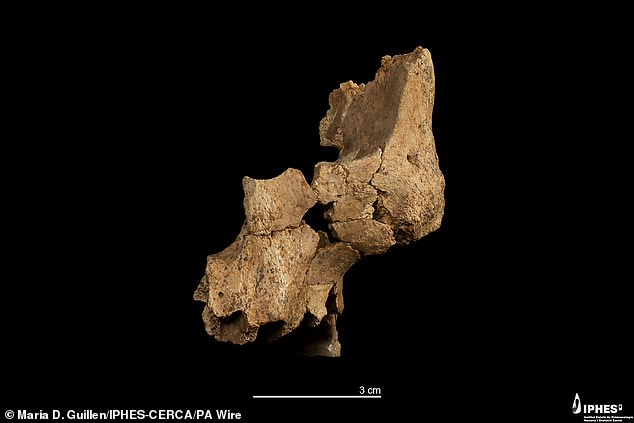
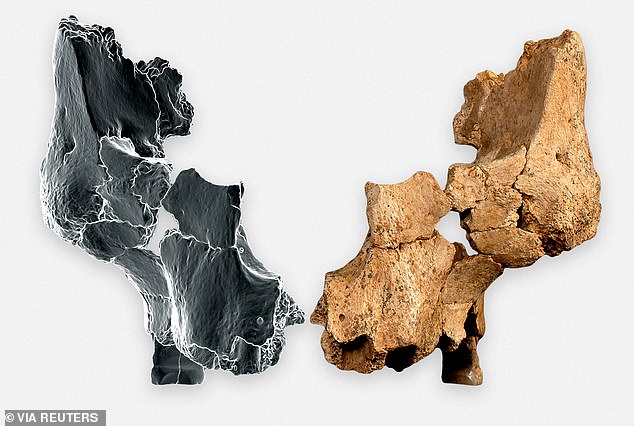
Composed of several broken fragments and parts of two teeth, the remains found at Sima del Elefante are believed to be the oldest example of human facial bones found in Western Europe.
The researchers nicknamed the individual 'Pink' after Pink Floyd's album Dark Side of the Moon, which is 'La cara oculta de la luna' in Spanish, where 'cara oculta' means 'hidden face'.
When Pink's remains were discovered, scientists initially thought that they would belong to one of the other ancient human species found in the area.
Within the cave, researchers have previously found the remains of Homo antecessor dating back 860,000 years.
By looking at the thousands of other animal fossils found in the same layer of the cave alongside the traces left in the soil by periodic shifts in Earth's magnetic field, the researchers dated Pink's remains to between 1.1 and 1.4 million years ago.
Additionally, after carefully reconstructing the remains, it became clear that Pink's face didn't have the same structure as any ancient human species from the area.
Co-author Dr María Martinón, director of the National Centre for Research on Human Evolution, says: 'Homo antecessor shares with Homo sapiens a more modern-looking face and a prominent nasal bone structure, whereas Pink’s facial features are more primitive, resembling Homo erectus, particularly in its flat and underdeveloped nasal structure.'
Homo erectus was the first human species to develop an upright gait and posture like a modern human and was the first to use stone hand tools for cutting.
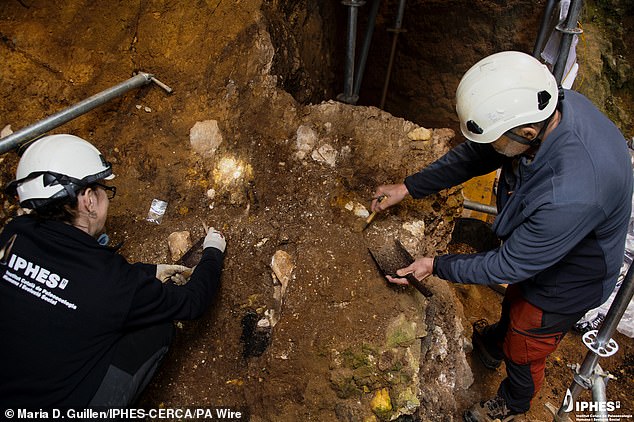
After emerging in Africa around two million years ago, this species migrated out into Asia and even made its way into Eastern Europe.
At a location in present-day Georgia, paleontologists have unearthed five craniums attributed to Homo erectus. tracing back 1.8 million years .
Nevertheless, the fossil records from Western Europe remain notably sparse until 800,000 years ago.
Scientists have discovered just one tooth and some stone tools from approximately 1.4 million years ago in Spain, alongside a jawbone at Sima del Elefante dated to 1.1 million years ago.
Near Pink's remains, researchers also discovered stone tools made of quartz and flint, alongside animal bones bearing clear cut marks.
This indicates that Pink and their relatives had already developed a simple tool 'industry' and knew how to butcher animals for meat just like Homo erectus.
Study co-author Dr Xosé Pedro Rodríguez, of the University of Rovira i Virgili (URV), says: 'They suggest an effective subsistence strategy and highlight the hominins’ ability to exploit the resources available in their environment.'
If Pink really is a member of Homo erectus, then this find would show that this human ancestor species spread itself far wider and far earlier than scientists had previously thought.
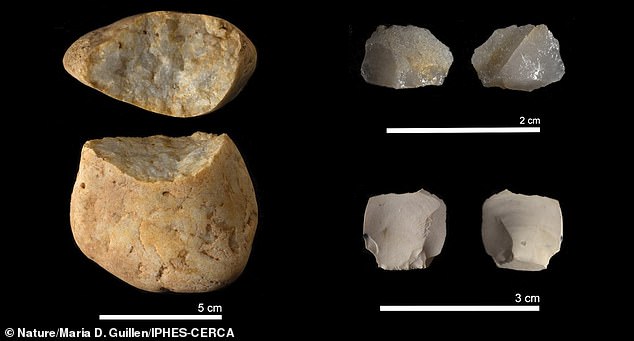
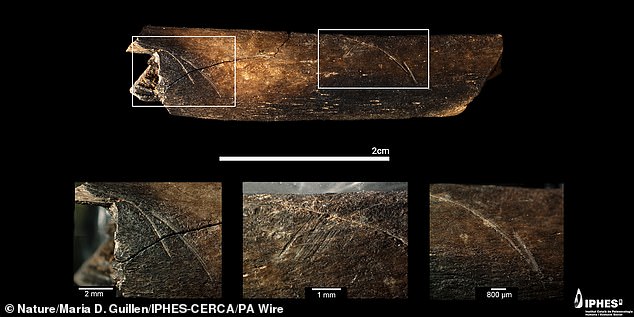
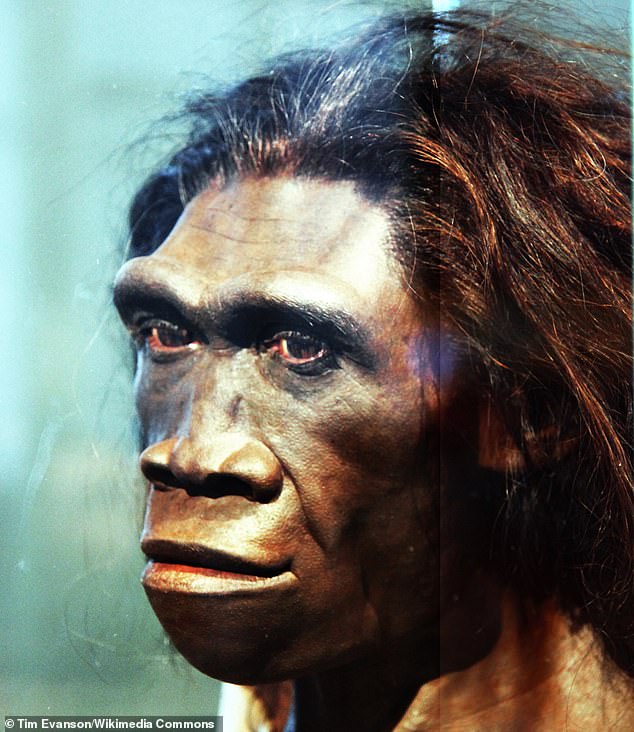
However, the researchers aren't convinced that Pink is just another member of this human ancestor species.
Although their skulls are similar, Pink's facial structure is narrower than examples of Homo erectus found across Asia and Africa.
However, based solely on pieces of bones and two slightly worn teeth, the scientists cannot yet confirm that Pink represents a completely new species.
Rather than doing so, they chose to label Pink as 'Homo affinis erectus,' employing the Latin word 'affinis' which signifies that it shares similarities with recognized species.
Dr Martinón states: "There isn't enough proof yet for a conclusive categorisation, so we chose the term Homo affinis erectus."
She mentions that this step was taken to 'recognize Pink’s connections with Homo erectus while still allowing for the chance that the remains could be from another species.'
The scholars contend that Pink's species formed part of the initial influx of humans into Western Europe.
Yet, that first migration appears to have been cut off abruptly when the climate of the Iberian Peninsula suddenly changed.

At the time Pink lived in Spain, the Sierra de Atapuerca region would have featured a mix of wooded areas, wet grasslands, and seasonal water sources - making for a resource-rich environment for ancient humans.
However, previous studies suggest that there may have been a sudden climatic shift around 1.1 million years ago which could have wiped out the human population.
This might be why there’s a significant gap in the fossil records between Pink and the subsequent Homo antecessor specimens.
Dr Eudald Carbonell, a paleontologist from URV and co-director of the project, states: "The evidence pointing towards distinct hominin groups in Western Europe throughout the Early Pleistocene indicates that this area played a crucial role in the evolution of the genus Homo."
Read more